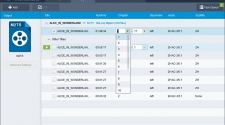In today’s digital world, one of the biggest threats to digital companies is hacking of their confidential data that can affect their business severely. These hacking techniques can lead to a security breach and directly or indirectly affect business growth. Many professional hackers misuse vulnerabilities and negotiate on security controls to get access to framework assets of an organization and misuse them for their personal benefit. Many experts on the topic have already portrayed various examples of hacking worldwide, their adverse effects on the organizations and offer programs to learn ethical hacking for individuals who wish to learn ethical hacking.
These kinds of programs indicate how hacking can change the features of application or system fromits inventive drive and can steal or redistribute important data prompting the loss of huge monetary amount. However, on the other hand, ethical hacking includes following the equivalent hacking methods and technologies in order to distinguish susceptibilities from the system. The prime job of any ethical hacker in an organization is to identify all kinds of vulnerabilities and fix them in advance before they can be misused.
If learning EC Council ethical hacking is on your list, then it is advisable to go through the below mention five essential steps that can help you in getting the required information about hacking and how you can deal or perform them ethically. Also, you check out an interesting video presentation available on for better understanding of the topic.
- Reconnaissance: Reconnaissance, also known as a data gathering step, is the first phase of hacking. This is where hacker aims at collecting each and every possible information about the target (complete organization system or an individual system or application of an organization) without letting them know the actual purpose of collecting information. This step takes place before conducting any kind of attack on the target. There are two kinds of reconnaissance that include Active Reconnaissance or Passive Reconnaissance. The major difference between the two is that Active Reconnaissance involves direct communication with the target to accumulate data about it. Contrary, Passive Reconnaissance comprise of collecting information about the goal without directly communicating with it and via some indirect source including online networking sites, public sites, open-source sites, etc.
- Scanning: Scanning in the second phase of hacking where hacker finds out the tools needed to quickly grab information about the target and access it to achieve the desired attack’s result. This is one of the important before attack phase that helps hacker in exploring the weak points of the application or systems. Hackers scan the data gathered during the reconnaissance phase and deploy hacking tools accordingly to hack the aimed system, application, or network. Some examples of these tools or techniques can be network mapping, port scanning, vulnerability testing, etc.
- Gaining Access: The actual hacking takes place at this phase where hack gets successful in gaining access to the target system, network, or application using the potential tools and techniques. Post getting access, the hacker runs through the target and modify, delete, or hide the aimed information. Achieving the purpose of the attack is the main objective of this step. It is where the attacker takes complete control of the system or network to misuse the data or launch another attack.
- Maintaining Access: As soon as the hacker gets the access, they wish to keep that access for future attacks without letting the user know about it. There are various malicious files available online to do this job. Once the hacker maintains the access, he or she can use it as a base for undertaking other future attacks. During this phase, the hacker mostly tries to remain silent to avoid getting caught while continue using the hacked application, system, or network. Some hackers smartly make this mischief and remain undercover for a longer duration.
- Covering Tracks: Covering track is the last phase of the hacking. This is a kind of preventive step where hacker try his or her best to cover the tracks in order not to get caught by security staff members and get into any legal trap. A smart hacker always ensures to remove all sort of tracks of his or her hacking after accomplishing the attacking mission. This is majorly done by deleting or modifying the logs from the system, removing the created folders, clearing the cookies and the catches, etc.
All these above steps are basics to grab if you are planning to opt for EC Council ethical hacking courses and make your career in this domain. For any security venture or IT company, especially these days having a data security team of the department is must in order to avoid becoming a victim of any kind of hacking attack.
Security or cycle hacking has undoubtedly become a matter of concern for many companies.Therefore, many MNCs as well as Indian companies, think about objectives ahead of time and offer jobs for candidates who have undertaken EC Council ethical hacking to keep their systems and data safe from unethical hackers. Such companies hire professionals to keep a hold on strategic issues and settle them even before they become a matter of concern or leads to any security breach.
So, it is not wrong to say that to guarantee the achievement of your career goal invest your money and energy in undertaking professional learning ethical hacking programs. Hacking is indeed an upcoming danger to the organization that can lead to losing billions of dollars. Thus, instead of bearing such a huge loss, many companies are stepping ahead to look for professional, ethical hackers who have the potential to identify such security threats and save them from being exploited. With this, I would like to wrap up saying investing your time and money in learning ethical hacking can be one of your best career decisions that you will not regret for sure in the future. Look for the best course and go for it.
















